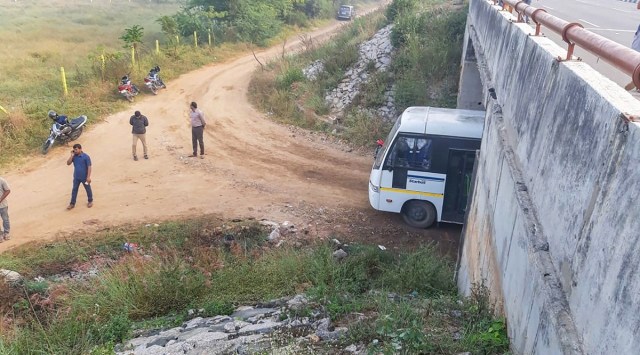
Co-written by Prashant Bhaware
On May 20, a Commission appointed by the Supreme Court headed by Justice VS Sirpurkar submitted its report on the probe into the extrajudicial killing of four men accused in the gang rape and murder of a 26-year-old veterinarian in Hyderabad. The report found that the encounter, on December 6, 2019, was fake and highlighted in detail the discrepancies in the police version of the story. It recommended that 10 police officers should be tried under various charges, including murder under section 302 of the Indian Penal Code (IPC).
The report has falsified the claims of the police and underscored the inconsistencies and cover-ups in its investigation. Its most sobering finding is that the police concealed the fact that two of the four accused were minors at the time of their arrest and death. The alleged violation of the rule of law by the police is symptomatic of the larger malaise afflicting policing in the country. It raises urgent questions about the need for police accountability. In recent times, the bulldozing of the properties of Muslim, Adivasi and Bahujan communities in Khargone, Delhi and other parts of the country, illegal detention and surveillance of protestors exercising their fundamental rights or the custodial deaths of shopkeepers Jeyaraj and Bennicks in Tamil Nadu in 2020 speak to the vast unchecked discretionary powers of the police that impact virtually all aspects of the lives of Indian citizens, particularly those living on the margins of society.
Buy Now | Our best subscription plan now has a special price
Despite its multiple crucial findings, the report is silent on the question of the social backgrounds of the accused persons. That is crucial to understanding the disproportionate vulnerability of the accused persons to the violence of policing. As per the Prison Statistics of India Report of 2020, 72.8 per cent of undertrials in prisons belonged to SC (~21 per cent), ST (~10.5 per cent) and OBC (~34.3 per cent) communities. A study conducted by the Criminal Justice and Police Accountability Project (CPA Project) has revealed that approximately three of the four individuals arrested for violating the pandemic-induced lockdown regulations in Madhya Pradesh, in 2020, belonged to marginalised communities. Nearly 30 per cent were from Scheduled Caste (SC), Scheduled Tribe (ST) and De-notified Tribal (DNT) communities; nearly 20 per cent were members of Other Backward Class communities and nearly 25 per cent were Muslims. Members of these communities, predominantly shopkeepers, street vendors and pedestrians, were arrested for petty crimes or infractions. In 2014, the SC ruled against the practice of arresting people for petty offences. It held that any person accused of any offence punishable with less than seven years, or which may extend to seven years with or without a fine, cannot be arrested except on the recording of cogent reasons for doing so. The guidelines formulated by the Court, in this case, were to be a deterrence against casual arrests by the police.
However, arrests do not follow due processes and illegal detention and torture continue to remain open secrets of policing in the country. Several Law Commission reports and Committees such as the Malimath Committee have recommended police reform. In the Prakash Singh vs Union of India judgment of 2006, the Supreme Court issued directions for the setting up of a Police Complaints Authority and separating the investigation and law and order functions of the police (a standard recommendation also made by other commissions). These recommendations remain on paper. Despite the jurisprudence formulated by the apex court in various judgements, most notably in DK Basu v State of West Bengal – after the custodial murder of a person from a DNT community — the rights of an accused persons continue to be realised only in the breach by the police.
The widespread public sanction for retributive police violence, also witnessed in the aftermath of the Hyderabad encounter, can increase the impunity of the errant law-keepers, often at the expense of the most vulnerable. The Hyderabad encounter is therefore a testament to both unchecked police powers and a carceral society’s quest for retribution.
(The writers are with the Criminal Justice and Police Accountability Project. Bhaware is a legal intern; Meshram is a lawyer and a research associate; Sonavane is a lawyer and co-founder of the criminal justice and police accountability project; and Kinger is a research associate.)